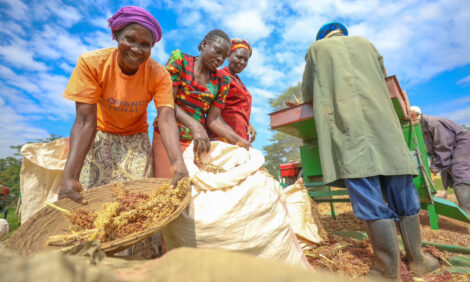



Brazil: Poultry and Products Semi-Annual Report 2011
Broiler production estimates for 2011 have been revised to a record of 12.9 million metric tons, up five per cent from the record and surpassing production in 2010, according to the latest GAIN report from USDA Foreign Agricultural Service.The increase in production is mostly driven by strong domestic demand and another record estimated for broiler exports. Post also revised 2010 turkey estimates to reflect new revised production and export data.
Broilers
Production
Broiler production for 2011 is estimated at 12.9 million metric tons (mmt), up five per cent from the record production of 12.3mmt in 2010. This reflects continued optimism from industry leaders for higher exports and firm domestic demand, although profit margins for 2011 may show some decline because of higher soy and corn prices, which likely will increase production costs.
The overvalued Brazilian currency also remains a concern to the industry, but it did not prevent record exports in 2010.
Post revised 2010 broiler production to 12.3mmt, nearly 12 per cent higher than 2008. The major increase in production last year is due mostly to a major jump in domestic demand due to higher disposable income. An additional and surprising contribution to higher domestic demand was the exceptional higher beef prices which forced consumers to switch to chicken meat. Also, record exports contributed to increased production. During the period 2009-2010, Brazil had an annual average increase in broiler production of 5.6 per cent.
Consumption
Domestic consumption of broiler meat is expected to continue strong in 2011 with a projected increase of 3.5 per cent to 9.6mmt, mostly driven by the continuing increase in disposable income of Brazilian consumers and expected higher beef prices. Post also revised 2010 consumption level. The exceptional performance of the Brazilian economy in 2010 with a 7.5 per cent growth rate, inflation around 4.5 per cent and the strong employment numbers on record, and a shift from more costly beef, contributed to a major jump in consumption of chicken meat. Economic analysts also emphasize that in the past five years a significant amount of the population, estimated at 30 million people, moved from the lower classes to the middle class in Brazil, driving consumption of food and other goods.
Trade
The outlook for broiler exports in 2011 calls for a four per cent increase over the 3.6mmt of record exports last year, including chicken feet and paws. The growth in exports is likely to be driven by higher sales of whole broilers in general and chicken parts to China and Hong Kong. Currently, Brazilian officials are negotiating an increase in certified Brazilian plants to export to China from 25 to 44. Brazilian exporters also estimate an increase in sales to Russia as they expect that the new quota system should benefit Brazil. Brazil will also continue to target Africa for market promotion in 2011. The Brazilian government also expects to close a sanitary agreement to export chicken meat to Malaysia this year. Although exports to Egypt account for only 3.4 per cent of total exports, Brazilian exporters are concerned with the political situation in the Middle East. Exporters are particularly concerned with terms of payments, import logistics and the increase in the cost of insurance.
Post updated trade data for 2010 to include final official export numbers. In 2010, total volume of broiler meat exports reached 3.6mmt, an increase of 5.6 per cent from 2009. However, the value of exports increased by 17.8 per cent to US$6.3 billion due to the increase in the average price of broiler meat in the world market. This data includes all types of broiler products, including feet and paws.
Broiler export markets with major increases in 2010 were China (+407 per cent), Iran (+311 per cent), Egypt (+130 per cent), Russia (+98 per cent), and Japan (+26 per cent), while markets with major declines were Iraq (-26.4 per cent), Hong Kong (-22.6 per cent), Middle East countries (-15.3 per cent) and the European Union (-9.6 per cent).
Policy
According to trade sources, Brazil is getting ready to confront the European Union at the World Trade Organization (WTO) regarding EU restrictions on imports of Brazilian chicken (changes in marketing standards for broiler meat). As per Federal Law No. 12,350 of 20 December 2010, the Brazilian poultry and swine sectors are eligible to receive a tax credit of 30 per cent on the social tax PIS-COFINS (9.25 per cent) for exports of chicken meat. However, this law is pending a government regulatory instruction to be applied on exports.
Turkeys
Post also updated 2010 data to reflect final numbers for production and trade. The outlook for 2011 remains unchanged.
Further Reading
| - | You can view the full report, including all tables by clicking here. |
February 2011








